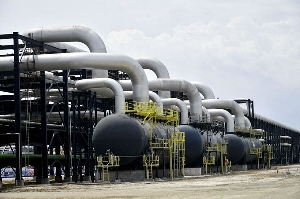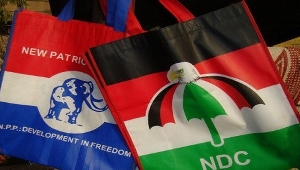Business News of Thursday, 3 June 2021
Source: business24.com.gh
BoG flags risks to fiscal outlook
Governor and Chairman of the Monetary Policy Committee of the Bank of Ghana, Dr. Ernest Addison, has said there are risks to the fiscal outlook despite signs of a return to fiscal consolidation in the first four months of 2021.
According to the Governor, there has been some improvement in revenue collection and expenditure containment, which is ensuring a re-alignment to the consolidation path.
“The fiscal data shows that fiscal revenues have significantly outpaced developments a year ago but slightly lag behind target. The gap in revenue performance vis-à-vis the budgeted target has been somewhat compensated for by expenditure containment measures,” Dr. Addison said at a media briefing on Monday following the 100th meeting of the MPC.
However, he stated that wage settlements, energy IPP payments, the potential for arrears build-up and for scaled-up expenditures associated with COVID-19 waves and mass vaccination efforts are near-term risks to the fiscal outlook.
In addition, the implementation of the Ghana CARES programme would have to be carefully managed in a timely manner to minimise any deviation from the path of fiscal consolidation, he added.
“Projected growth in the extractive industries, steady rollout of the vaccination programme, and recovery in industry and the services sectors should work their way in supporting a faster closure of the output gap in the medium-term,” the Governor said.
The recovery from the pandemic gained some momentum, according to the latest high-frequency indicators.
According to the bank’s Composite Index of Economic Activity (CIEA), there was a strong annual growth of 26.8 percent in March 2021, compared to a contraction of 1.9 percent in the corresponding period of 2020.
Domestic consumption (proxied by VAT collection), construction activities, international trading activities, resumption of industrial production activities, and air-passenger arrivals were key drivers of economic activity during the period.
Ahead of the media briefing, some market experts had projected the policy rate would be kept unchanged, citing upside threats to inflation on account of the higher taxes, higher petroleum prices, and expected upward review of utility tariffs.
However, to the surprise of most analysts, the MPC decided to lower the monetary policy rate by 100 basis points to 13.5 percent, indicating that risks to the inflation outlook appear muted in the near term.
“The Committee will continue to monitor price developments closely and take appropriate action, where necessary, to contain all potential pressures to the inflation outlook,” the Governor said.













